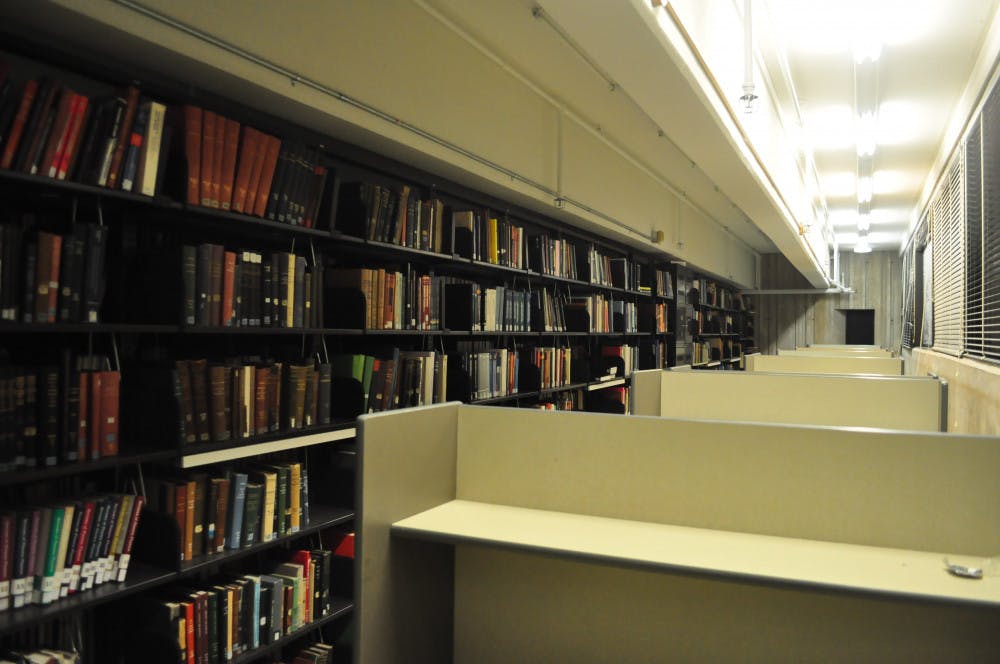An $8.9 million project to renovate the Sciences Library will begin this summer, said Associate Provost David Paine. Floors five through nine of the library will become a new home for the Instructional Technology Group, the Language Resource Center, the Social Sciences Research Lab, the Laboratory for Educational Innovation and the Sheridan Center for Teaching and Learning.
The project, initiated last year by former Provost Mark Schlissel P’15, was delayed so that current Provost Vicki Colvin could revise the plan to reflect her own academic priorities, Paine said.
The University is working with the firm Architecture Research Office to solidify the design for the new spaces, Paine said. ARO also worked on the renovation of the Friedman Study Center in 2007 and is overseeing the design of the new Applied Mathematics building.
The floors set for renovation currently house stacks. Books that are not often checked out will be relocated to the Library Collections Annex at Park Lane, where they will still be available for use, Paine said.
Because “heat loads” in the library will increase when more people make use of the space currently occupied by books, floors three through 13 will undergo a heating, ventilation and air conditioning upgrade, Paine added.
The Friedman Study Center, which includes the 24-hour mezzanine, basement and lobby, will not be touched, Paine said, except for the “overdue” addition of a handicap-accessible bathroom in the basement.
Two of the renovated floors will also be used as “flexible open space” for additional programs, Paine said. He added that the Writing Center could be relocated to one of these floors.
The LRC, which currently provides online access to digital language resources, will now occupy a physical space in the Sciences Center that will entirely revamp its functions, said Ravi Pendse P’17, vice president for computing and information services and chief information officer.
“The idea is we want to have a fabulous language faculty, and we want to build a state-of-the-art Language Resource Center for them,” Pendse said.
The ITG will work closely with the LRC to provide guidance for students and faculty members who use the new technologies and media, he added.
The new LRC will be equipped with learning studios, in which students can practice pronunciation or watch clips for their language courses alongside faculty members, Pendse said.
“Sometimes when you practice diction you actually say things out loud, but you want to be able to do that without disturbing others,” Pendse said. “A library conference room or open space is not the place to do that. Here, you will be able to do all of those things privately.”
“The most difficult part of practicing a language is finding someone proficient enough in that language to practice with,” said Joohwan Kim ’18. “It’s good to have individuals who are fluent available at the Center.”
Sarah Yoho ’18 said while a physical space may not be particularly beneficial for students whose professors hold flexible office hours, it could provide other students more opportunities for practice, which is often the most difficult part of language learning. “I’m personally lucky to have a professor with really open office hours, but there are some people that feel too intimidated to approach their professor,” she added.
The LRC and the ITG are currently located in the Center for Information Technology, but their move will free up space that could potentially be used for more computer science classrooms, Pendse said.
The Sheridan Center will occupy part of the SciLi, but it remains to be determined whether the entire center will relocate or just its Laboratory for Educational Innovation, said Kathy Takayama, executive director of the Sheridan Center.
The Laboratory for Educational Innovation has overseen the development of Brown’s massive open online courses, a variety of interactive online modules and flipped classrooms.
“If the center has two separate parts, then at times we might have to make an extra effort to ensure that my entire team is in close communication,” she added.
Takayama said she hopes the architects construct a collaborative open space that reflects the lab’s goal to “engage undergraduates as the architects of their own experience.”
The renovations do not come without obstacles. “The SciLi is a challenging space,” Paine said. “It’s this brutalist architecture with floors which are designed to hold stacks of books. It’s not appropriate for classrooms since the height of the ceiling is 7 feet, 10 inches.”
Pendse said that he plans on gathering feedback from the Undergraduate Council of Students, as well as various graduate students, throughout the design process. Colvin has also spent time speaking with students to get a better idea of student needs, Paine said.

ADVERTISEMENT




